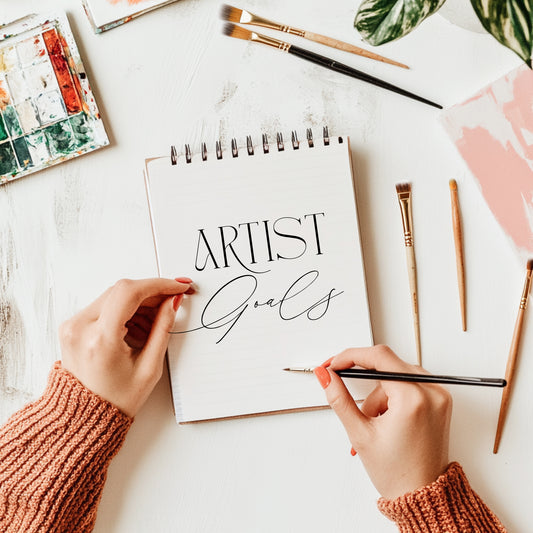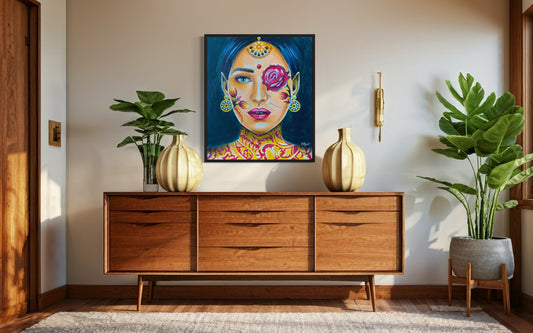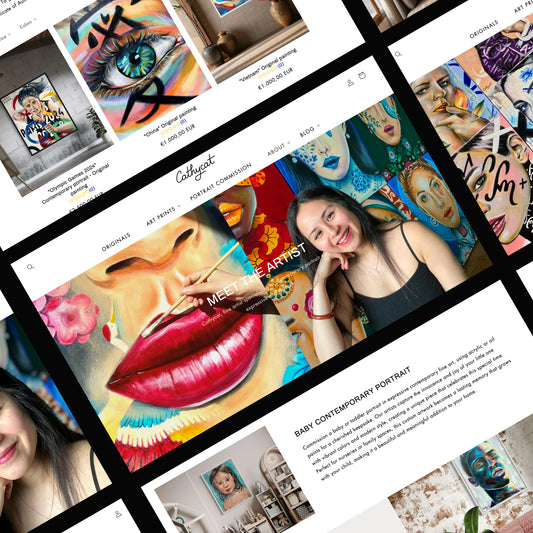
Imposter syndrome is a psychological phenomenon where individuals doubt their accomplishments and fear being exposed as a "fraud," despite evident success. Artists, whether beginners or seasoned professionals, are particularly susceptible to imposter syndrome due to the highly subjective nature of art and the pressure to constantly produce original work. Overcoming this challenge is essential for personal growth and creative fulfillment. Here are 10 strategies to help artists, at any stage of their career, conquer imposter syndrome, alongside examples of famous artists who battled similar feelings.
1. Acknowledge Your Feelings
The first step in overcoming imposter syndrome is recognizing and acknowledging your feelings. Understand that it’s normal to experience self-doubt, especially in a field as personal and subjective as art. By accepting these emotions, you can begin to address them directly rather than letting them control your creative process.
2. Remember That Even Masters Felt This Way
Many renowned artists have struggled with imposter syndrome. Vincent van Gogh, despite creating some of the most famous paintings in history, often questioned his talent and worth as an artist. Similarly, Rembrandt faced financial struggles and self-doubt later in his career. Understanding that even these masters faced similar challenges can help you realize that you’re not alone and that doubt doesn’t diminish your talent or potential.
3. Focus on Your Growth, Not Perfection
Imposter syndrome often stems from a desire for perfection. Instead of striving for an unattainable ideal, focus on your growth and progress. Celebrate the improvements in your work, no matter how small, and understand that art is a continuous journey of learning and development. By shifting your mindset from perfection to progress, you can alleviate some of the pressure that fuels imposter syndrome.
4. Build a Support Network and Community
Surround yourself with a supportive community of fellow artists, mentors, and friends who can provide constructive feedback and encouragement. Sharing your experiences with others who understand the struggles of being an artist can help you gain perspective and reduce feelings of isolation. This network can also provide valuable advice and reassurance during times of self-doubt.
5. Keep a Record of Your Achievements
Documenting your accomplishments, whether it’s finishing a painting, selling your first piece, or receiving positive feedback, can help you counteract imposter syndrome. Keep a journal or portfolio of your work and revisit it when you’re feeling doubtful. Seeing your progress and achievements in one place can remind you of your capabilities and the hard work you’ve invested in your craft.
6. Embrace Mistakes as Part of the Process
Mistakes are an inevitable part of the creative process, and they don’t define your worth as an artist. Instead of fearing failure, view mistakes as opportunities for learning and growth. By embracing the imperfections in your work, you can reduce the fear of being “found out” as an imposter and instead focus on the lessons learned from each experience.
7. Set Realistic Goals
Setting realistic, achievable goals can help you maintain a sense of direction and purpose in your art career. Break down larger goals into smaller, manageable tasks to avoid feeling overwhelmed. By accomplishing these smaller tasks, you can build confidence and momentum, making it easier to tackle bigger challenges without succumbing to self-doubt.
8. Seek Constructive Criticism
Feedback is crucial for artistic growth, but it’s important to seek constructive criticism from trusted sources rather than overly critical or negative opinions. Constructive feedback can help you identify areas for improvement while also highlighting your strengths. By focusing on the positive aspects of your work and understanding where you can improve, you can build confidence and reduce feelings of inadequacy.
9. Practice Self-Compassion
Be kind to yourself and recognize that everyone experiences moments of doubt. Practicing self-compassion involves treating yourself with the same understanding and patience you would offer a friend in a similar situation. When you encounter setbacks or feelings of inadequacy, remind yourself that these are normal parts of the creative journey and don’t define your value as an artist.
10. Visualize Success and Positive Outcomes
Visualization is a powerful tool for overcoming imposter syndrome. Take time to imagine yourself achieving your goals, whether it’s completing a challenging project, receiving recognition for your work, or simply feeling proud of your artistic journey. Visualization can help you build confidence and reduce anxiety by creating a positive mental picture of your future successes.
Conclusion
Imposter syndrome is a common challenge for artists, but it doesn’t have to hold you back. By acknowledging your feelings, focusing on growth, and building a supportive network, you can overcome self-doubt and continue to create meaningful, impactful art. Remember that even the greatest artists, like Van Gogh and Rembrandt, faced similar struggles, yet they persevered and made lasting contributions to the world of art. Embrace your journey, practice self-compassion, and trust in your unique creative voice.
Explore our fine arts collection of Original paintings, Fine Arts Print and Canvas Print, in contemporary expressive portraits from Cathycat.


